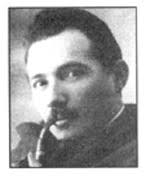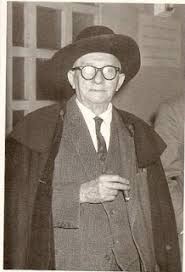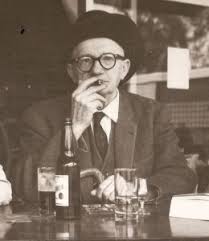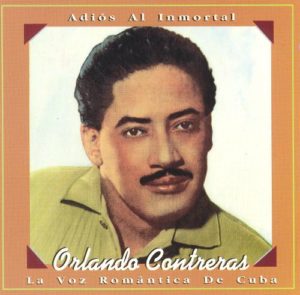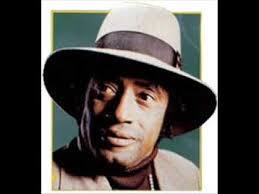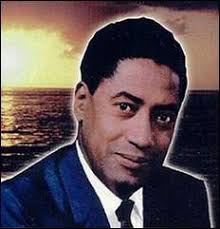 AFRO-CUBANISMS: ALFONSO CAMÍN, THE ARCHITECT OF THE AFRO-CUBAN POETRY.
AFRO-CUBANISMS: ALFONSO CAMÍN, THE ARCHITECT OF THE AFRO-CUBAN POETRY.
Considered the artifice of Afro-Cuban poetry, later triumphantly expressed by Carpentier, Girao, and Guillén among others, Alfonso Camín, the Asturian-Cuban as he has always been considered among our intellectual circles, left the original traces of his poetic and intellectual capacity in the particularities of our autochthonous realities as Cubans.
Born in La Peñuca, Gijon, Spain, Alfonso Camin Meana emigrated to Cuba at the age of 15 (1905), taking his youth along hard and forced paths. After having worked in a quarry in Contrueces, when he arrived in Cuba, where he stayed until 1914 when he returned to Spain as a journalist for the “Diario de la Marina” to cover the First World War. During his stay in Cuba, he became editor of the newspaper “La Noche”, as well as other newspapers in Havana and Santiago de Cuba. He directs the magazine “Apolo” and is editor of the Diario de la Marina.
In Alfonso Camín, this exercise has a double motivation: his Spanish roots, and his Cuban experience. And it is necessary to establish that black poetry, mulatto poetry, and white poetry are divisions that limit the poetic body. Alfonso Camín is the only one of the first cultivators of the Afro-Cuban (until 1931) who did not enter to establish criticisms, rules, or aesthetic dispositions in essays or studies on the matter.
THE CUBAN AJIACO ON THE WALK
The black and the black in Cuba, like the mulatto and the mulatto later, were a different human production, with a different expression and art, a deep human penetration, in the spiritual and in the social. The color of the black and the mulatto were no longer an original black: the sap of the island of Cuba had lightened it, in the grace of a different tropics, and in the hue of those impetuous mulatto women who swaggered the streets of Havana: Cerro to Jesús del Monte, / from Vedado to Luyanó! In them Camín made the mulatto women walk. As he made them dance in the countryside: when in that Turkish sunrise / he looked at the stream / clean of the Damují. This grants Alfonso Camín the paternity of Afro-Cuban poetry.
His “Negra Panchita” (1925) reflects the core of the Antillean lineage in his portrait “:
Eat your rice, your tripe,
drink ten times coffee,
bilongo jealously:
“Bilongo killed Mercé.”
He loves the white man and he hates the Congo;
but never forget that
by lands of Hongolosongo
they killed Palanqué.
White teeth, red bemba,
Maloja colored skirt,
with which on the roads
del Cerro and Tulipán,
is leaving tides
of meat and madapolán.
In “La Negra Panchita” (see above) the initial topics of Afro-Cuban aesthetics are present, together with the topics inherited from Cuban manners and criollismo: black jargon; the sensuality, movement and eroticism of the black woman; the brave and fierce but also long-suffering and loving black; slavery; the rumba, the son; the drum; the Santeria; the Asturian, the Chinese; the Spanish winemaker, geography, nature, and Cuban fauna; the Cuban street and the solar; the Viper; the sugar mill and cane; the Batey, Cuban gastronomy, Cuban clothing; and the atmosphere of rumba, party, and revelry.
The influences of José Martí, the father of the Cuban nation, politician, philosopher and poet, in Camín’s work are notorious, and precisely the José Martí Cultural Foundation is going to organize cultural events to vindicate the Asturian poet. “The objective is to return Camín to Cuba.” As stated by the president of the association Alfredo Camin.
He founded the Norte magazine in Madrid in 1929, where he lived until 1936 and his march into exile in Cuba and later to Mexico in 1937. In Madrid, he met his wife Rosario Armesto. The Norte Magazine would keep her in Mexico until 1967, the year in which she definitively returned to Spain.
He was named in 1981 “Favorite Son and Poet of Asturias” He is considered the National Poet of Asturias.
Alfonso Camin, the Poet of Asturias died, after receiving the recognition and admiration of his countrymen, on December 12, 1982. His remains rest in the San Félix cemetery, in Porceyo (Gijón).
As Cubans, we join these tributes to those who in his works sang to our countryside, to our women and men. There are a total of 102 poems that run through a vital chronology, but also the different poetic “Palos” that he played, his fertile Cuban and Mexican stages, his songs to Asturias, but also to other Spanish regions, or his poetry to war.
 AFRO-CUBANISMOS: ALFONSO CAMÍN, EL ARQUITECTO DE LA POESIA AFRO-CUBANA.
AFRO-CUBANISMOS: ALFONSO CAMÍN, EL ARQUITECTO DE LA POESIA AFRO-CUBANA.
Considerado el artifice de la poesia afrocubana, que más tarde expresaran triunfalmente, Carpentier, Girao y Guillén entre otros, Alfonso Camín, el asturiano-cubano como se le ha considerado siempre entre nuestros circulos intelectuales dejó las huellas originales de su capacidad poetica e intelectual en las particularidades de nuestras realidades autoctonas como cubanos.
Nacido en La Peñuca, Gijon, España, Alfonso Camin Meana emigró a Cuba a los 15 años (1905), llevando su juventud por caminos duros y forzosos. Tras haber trabajado en una cantera de Contrueces, al llegar a Cuba, donde estuvo hasta 1914, cuando regresa a España como periodista del “Diario de la Marina” para cubrir la Primera Guerra Mundial. Durante su estancia en Cuba llega a ser redactor del periódico “La Noche”, así como de otros diarios habaneros y de Santiago de Cuba. Dirige la revista “Apolo” y es redactor del Diario de la Marina.
En Alfonso Camín ese ejercicio lleva una motivación doble: su raíz española, y su vivencia cubana. Y es necesario dejar asentando que la poesía negra, poesía mulata y poesía blanca son divisiones que limitan el cuerpo poético. Alfonso Camín es el único de los primeros cultivadores de lo afrocubano (hasta 1931) que no entró a establecer críticas, reglas o disposiciones estéticas en ensayos o estudios al respecto.
EL AJIACO CUBANO EN CAMÍN
El negro y la negra en Cuba, como el mulato y la mulata después, eran una producción humana distinta, con una expresión y un arte diferenciado, una penetración humana profunda, en lo espiritual y en lo social. El color del negro como del mulato no eran ya un negro original: la savia de la isla de Cuba lo había clareado, en una gracia de un trópico distinto, y en la tonalidad de aquellas impetuosas mulatas que chancleteaban las calles de La Habana: del Cerro a Jesús del Monte,/del Vedado a Luyanó! En ellas hizo pasear Camín a las mulatas. Como las hizo danzar en la campiña: cuando en aquel amanecer turquí/ miraba en la corriente/ limpia del Damují. Esto le concede a Alfonso Camín la paternidad de la poesía afrocubana.
Su “Negra Panchita” (1925) nos refleja la medula de la estirpe antillana en su retrato”:
Come su arroz, su mondongo,
toma diez veces café,
echa por celos bilongo:
”Bilongo mató a Mercé”.
Ama al blanco y odia al Congo;
pero nunca olvida que
por tierras de Hongolosongo
mataron a Palanqué.
Dientes blancos, bemba roja,
falda color de maloja,
con la que por las calzadas
del Cerro y de Tulipán,
va dejando marejadas
de carne y madapolán.
En “La Negra Panchita” (ver arriba) están presentes los tópicos iniciales de la estética afrocubana, unidos a los tópicos heredados del costumbrismo y criollismo cubano: la jerga negra; la sensualidad, movimiento y erotismo de la negra; el negro valiente y aguerrido pero también sufrido, y amoroso; la esclavitud; la rumba, el son; el tambor; la Santería; el asturiano, el chino; el bodeguero español, la geografía, la naturaleza y fauna cubana; la calle cubana y el solar; la culebra; el ingenio azucarero y la caña; el batey, la gastronomía cubana, la vestimenta cubana; y el ambiente de rumba, fiesta y jolgorio.
Las influencias de José Martí, el padre de la nación cubana, político, filósofo y poeta, en la obra de Camín son notorias, y precisamente la Fundación Cultural José Martí va a organizar actos culturales de reivindicación del poeta asturiano. «El objetivo es devolver Camín a Cuba». Como declara el presidente de la asociacion Alfredo Camin.
Fundó la revista Norte en Madrid, en 1929, donde habita hasta 1936 y su marcha al exilio en Cuba y más tarde a Mexico en 1937. En Madrid conoce a la que será su esposa Rosario Armesto. La Revista Norte la mantendría en México hasta 1967, año en que regresa definitivamente a España.
Fue nombrado en 1981 «Hijo Predilecto y Poeta de Asturias» Es considerado el Poeta Nacional de Asturias.
Alfonso Camin, el Poeta de Asturias murió, tras recibir el reconocimiento y admiración de sus paisanos, el 12 de diciembre de 1982. Sus restos reposan en el cementerio de San Félix, en Porceyo (Gijón).
Como cubanos nos sumamos a estos homenajes a quien en sus obras cantó a nuestra campiña, a nuestra mujeres y hombres. Son en total 102 poemas que recorren toda una cronología vital, pero también los distintos «palos» poéticos que tocó, sus fértiles etapas cubana y mexicana, sus cantos a Asturias, pero también a otras regiones españolas, o sus poesías a la guerra.
Agencies/ Wiki/ Puertodan/ Ine.es/ Extractos/ Excerpts/ Internet Photos/ Arnoldo Varona/ www.TheCubanHistory.com
THE CUBAN HISTORY, HOLLYWOOD.



